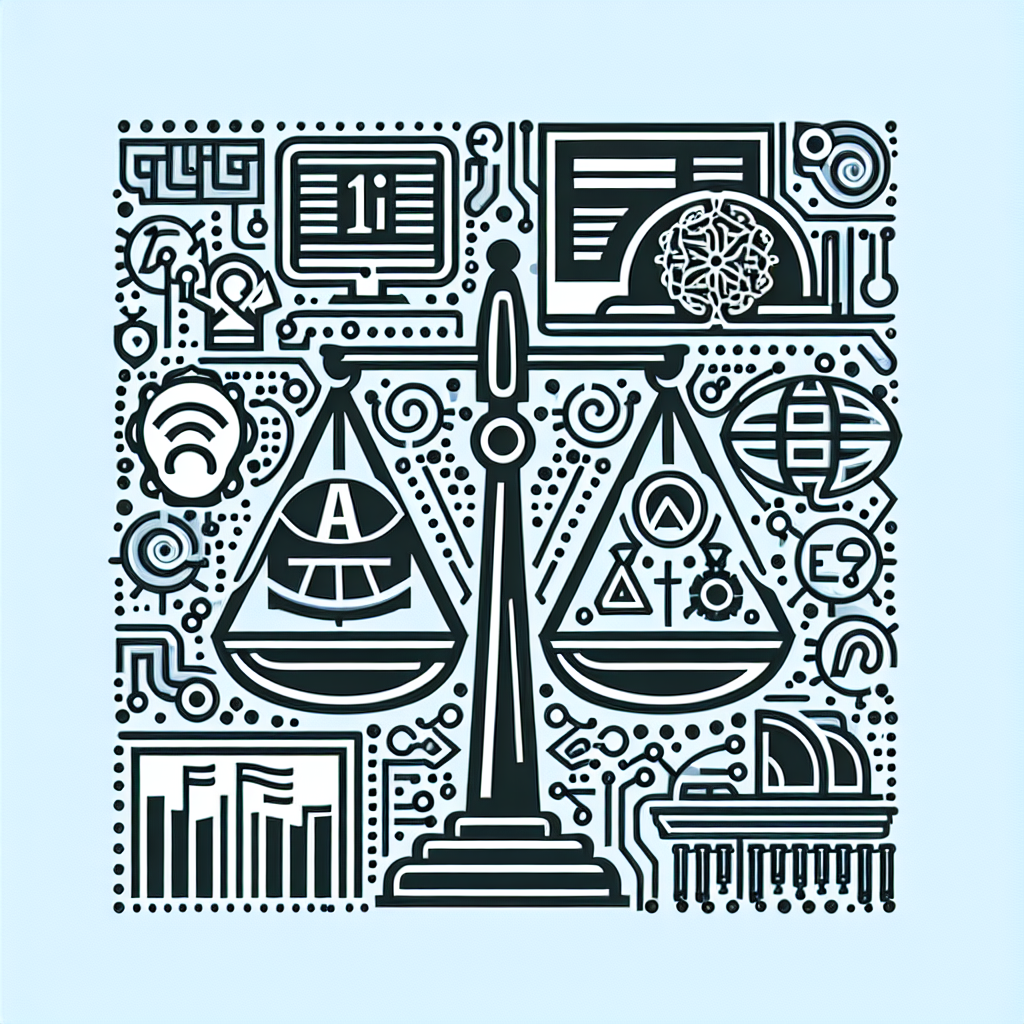The Ethics of AI-Generated News Content
Artificial Intelligence (AI) has revolutionized the way news content is created, distributed, and consumed. With the rise of AI-powered tools and algorithms, news organizations are able to generate stories at a rapid pace, personalize content for individual readers, and even predict future trends in the news cycle. However, as AI continues to play a greater role in shaping the news industry, ethical questions have emerged about the use of AI-generated news content. In this article, we will explore the ethical implications of AI-generated news content and discuss the challenges and opportunities it presents for journalism.
Ethical Concerns
One of the primary ethical concerns surrounding AI-generated news content is the potential for bias and misinformation. AI algorithms are trained on large datasets of news articles, which can contain biases and inaccuracies. If these biases are not properly addressed, AI-generated news content can perpetuate stereotypes, spread misinformation, and manipulate public opinion. Additionally, AI algorithms can inadvertently reproduce and amplify existing biases in the news industry, such as underrepresentation of marginalized communities or overemphasis on certain topics.
Another ethical concern is the lack of transparency and accountability in AI-generated news content. Unlike human journalists, AI algorithms operate on complex mathematical models that are often opaque and difficult to interpret. This lack of transparency makes it challenging for readers to understand how news stories are generated, which can erode trust in the news media. Furthermore, the rapid pace at which AI generates news content can make it difficult for journalists to verify facts, check sources, and ensure accuracy in reporting.
Furthermore, there are concerns about the impact of AI-generated news content on the job market for journalists. As AI algorithms become more sophisticated and capable of producing high-quality news content, there is a risk that human journalists will be replaced by machines. This could lead to job losses in the news industry and further concentrate power in the hands of a few tech companies that control AI algorithms.
Opportunities
Despite these ethical concerns, AI-generated news content also presents opportunities for improving the quality and accessibility of news reporting. AI-powered tools can help journalists analyze large amounts of data, identify trends and patterns, and uncover newsworthy stories that may have been overlooked by human reporters. AI algorithms can also personalize news content for individual readers based on their preferences, interests, and browsing history, which can enhance the reader experience and increase engagement with news outlets.
Furthermore, AI-generated news content can help news organizations reach new audiences and expand their global reach. By leveraging AI algorithms to translate news stories into multiple languages, adapt content for different cultural contexts, and optimize distribution channels, news outlets can connect with diverse audiences around the world and bridge gaps in information access. This can help promote greater understanding, empathy, and dialogue among different communities and foster a more inclusive and diverse news ecosystem.
FAQs
Q: How can news organizations ensure ethical use of AI-generated news content?
A: News organizations can ensure ethical use of AI-generated news content by implementing robust editorial standards, transparency measures, and accountability mechanisms. This includes training journalists and editors on the ethical implications of AI, developing guidelines for using AI tools in news reporting, and involving diverse stakeholders in the decision-making process.
Q: What role do journalists play in the era of AI-generated news content?
A: Journalists play a crucial role in the era of AI-generated news content by providing context, analysis, and critical thinking to complement the capabilities of AI algorithms. While AI can help automate routine tasks and generate news content at scale, human journalists are needed to verify facts, check sources, and uphold ethical standards in reporting.
Q: How can readers discern between AI-generated and human-written news content?
A: Readers can discern between AI-generated and human-written news content by looking for cues such as bylines, attribution to specific journalists or news outlets, and disclosure of AI tools used in the reporting process. News organizations can also provide transparency about the use of AI in their reporting and educate readers about how AI algorithms work.
Q: What are the implications of AI-generated news content for media diversity and pluralism?
A: The implications of AI-generated news content for media diversity and pluralism are complex and multifaceted. On one hand, AI algorithms can help news organizations reach new audiences and expand their global reach, which can promote greater diversity of perspectives and voices in the news ecosystem. On the other hand, there is a risk that AI algorithms may inadvertently reinforce existing biases and inequalities in the news industry, leading to homogenization of news content and underrepresentation of marginalized communities.
In conclusion, the rise of AI-generated news content presents both ethical challenges and opportunities for the journalism industry. By addressing concerns about bias, transparency, and accountability, news organizations can harness the power of AI to enhance reporting, engage readers, and promote a more inclusive and diverse news ecosystem. Ultimately, the ethical use of AI in news content requires a collaborative effort among journalists, technologists, policymakers, and the public to ensure that AI serves the public interest and upholds the principles of journalism.

